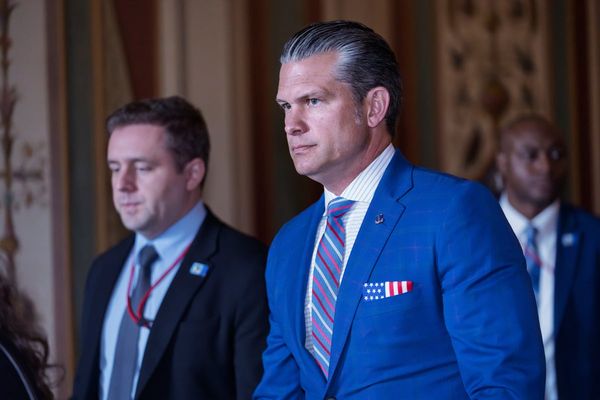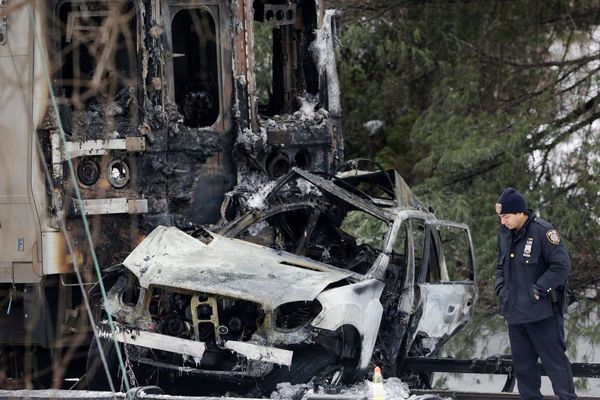
As European Union member states and the United Kingdom consider listing Iran’s Islamic Revolutionary Guard Corps (IRGC) as a terrorist organization, the issue of Iranian conscripts in the IRGC has emerged as a potential barrier—one that is being incorrectly pushed by opponents of designation.
The case for proscribing the IRGC as a terrorist organization is clear and compelling.
The IRGC is not a conventional state military. Instead, it is a violent Islamist extremist ideological organization. The way it operates—in terms of ideology and activities—is no different from terrorist groups listed by the U.K. and EU, including the Islamic State, al Qaeda, and Hezbollah. Like these groups, the IRGC has a formal indoctrination program designed to radicalize all of its members to embrace its doctrine. Similarly, for more than 43 years, the modus operandi of the IRGC has been—and remains—terrorism, militancy, hostage-takings, and hijackings. It has been involved in terrorist operations against civilians—inside and outside Iran—and has created some of the deadliest terrorist groups in the world, such as Hezbollah in Lebanon. The rise in IRGC terrorist activity across Europe, coupled with its increasing propaganda presence—designed to nurture homegrown radicalization in Europe in a way not too dissimilar to the Islamic State—has added urgency to proscribing the Guard.
Opponents, however, claim that proscription of the IRGC would punish conscripts who don’t get to decide where they are deployed as part of their two-year compulsory military service in Iran. These critics suggest that the selection process for IRGC draftees is entirely random and that those who are conscripted to the Guard have “no choice” but to complete their compulsory service. In turn, they argue that proscribing the IRGC as a terrorist organization, which would bar IRGC members from entering Europe, would unfairly punish conscripts.
However, the very premise of this argument is based on a flawed understanding of the recruitment and drafting mechanism that the IRGC uses for Iranian conscripts. This process is in fact far more nuanced and requires attention.
In Iran, it is compulsory for all healthy men above the age of 19 to complete a two-year military service. Since the 1979 Islamic Revolution, Iran has had a dual-military structure, split between the regular armed forces (the Artesh) and the clerical regime’s ideological army (the IRGC). Whereas the former operates as a conventional nation-state army mandated to protect Iran’s territorial integrity, the latter is a nonconventional force that is constitutionally mandated to enforce and spread the hard-line Islamist ideology of the regime at home and abroad through an “ideological mission of jihad in God’s path.” Out of Iran’s annual intake of some 400,000 conscripts, only 50,000 are drafted into the IRGC.
The IRGC began as an Islamist militia, and it has maintained its militia identity through the way it operates. Instead of symmetrical warfare, militancy, terrorism, hostage-taking, and hijacking remain the IRGC’s modus operandi. Last year, in the U.K. alone, at least 10 IRGC kidnapping or assassination plots were foiled. Like other Islamist extremist groups, ideological indoctrination of recruits and their families is also a central pillar of the Guard’s functionality, with radicalization accounting for more than 50 percent of training in the IRGC today.
Identifying and distinguishing between IRGC members and conscripts is a straightforward process. The former, namely IRGC members who are proactive recruits of the Guard, do not receive their “end of military service” card (cart-e payan-e khetmat)—a legal document all men in Iran are required to have—until they retire. Conscripts receive this card after completing their compulsory military service.
Indoctrination became an increasingly crucial pillar of the IRGC after the 1997 presidential elections, when Iran’s supreme leader, Ayatollah Ali Khamenei, received reports that 73 percent of IRGC members had voted for so-called reformist Mohammad Khatami, despite Khamenei’s endorsement of conservative Islamist Ali Akbar Nategh Nouri. For Khamenei, these reports indicated that the second generation of IRGC members (1990-2000) lacked loyalty and the necessary ideological zeal. In turn, he restructured indoctrination in the IRGC to further radicalize its members to nurture more extremist future generations. As a result, in 2002, the time dedicated to indoctrination in the overall training of the IRGC increased to 20 percent for all Guardsmen and their families; that would expand to 30 percent by 2007-08. Moreover, the 2009 anti-regime protests would once again prompt Khamenei to double down in his efforts to create a more ideologically “pure” force. Consequently, indoctrination was increased to 50 percent of overall training in the IRGC and with greater emphasis on the most violent Islamist extremist doctrines. This would pay off for the supreme leader, evidenced by the fact that of all the IRGC’s generations, the third (2000-10) and fourth generations (2010-20) are among the most ideologically extreme. The goal to double down on creating a hard-line Islamist extremist, ideologically pure force after the 2009 protests also had direct implications for the IRGC’s intake of conscripts.
To prevent outsiders from diluting the ideological commitment of other recruits, in 2010 the IRGC instituted a new system for evaluation and appointment that sought to restrict its conscript intake to active members of the Basij, the IRGC’s paramilitary militia. The Basij operates as the IRGC’s voluntary civil militia and functions as the enforcer of the regime’s hard-line ideology over Iranian society. All of its members undergo ideological indoctrination at the behest of the IRGC, and some have even participated in the Guard’s terrorist operations abroad.
Therefore, unlike in past decades, when conscripts could complete their required military service with the IRGC, since 2010 more than 70 percent of draftees in the IRGC have been active members of the Basij—confirmed by Col. Gholamali Kolakaj, who supervises staffing at the IRGC provincial corps in Khuzestan. In Iran’s major cities, where demand for IRGC military services is higher than elsewhere, this has even reached 100 percent of draftees. These draftees are conscripted through Basij district zones and regions and are later deployed to different branches or agencies of the IRGC. As all active Basij members above 15 years old are required to complete two months of military training by the IRGC as part of their service, the IRGC later exempts them from basic training as part of conscription.
Therefore, since 2010, we know that at least 70 percent of the IRGC’s 50,000 conscripts are ideologically aligned to the Guard as they were already proactively affiliated via the Basij.
But what does this mean for the remaining 30 percent of the conscript intake? Are they just ordinary Iranians who have unluckily been deployed to the Guard? The answer to this is more nuanced than “yes” or “no.”
The intake from this remaining 30 percent can be broken down into two categories.
The first are university graduates with a master’s or Ph.D. Due to their postgraduate degrees and subject-matter specialties, these draftees complete their two-year service by applying for desk jobs through directives (amriyeh) from different ministries and agencies. Each draftee has a personal choice on where to apply for their amriyeh. These include the health ministry, the industry ministry, and the defense ministry and the IRGC’s affiliated organizations (cultural, political, economic).
Those who serve their amriyeh in the IRGC will have made the proactive decision to work for the IRGC’s branches during their two years of conscription in spite of its reputation. It is safe to conclude that these individuals may have ideological convictions that align with the IRGC and its overarching objectives. Determining whether an individual served his amriyeh in the IRGC is achievable through the relevant documentation, including the official letter of amriyeh and pay slips. Those who have proactively chosen to serve their amriyeh in the IRGC will have an official letter from the Guard and will have been on the IRGC’s payroll during their two years of conscription.
Finally, in some unprivileged and poor areas, due to the number of Basij members being insufficient, the IRGC also accepts non-Basij soldiers. They are usually assigned to the IRGC by the NAJA Public Conscription Organization, which is responsible for distributing people in different armed forces. Of the IRGC’s 50,000 conscripts, these individuals constitute a maximum 20 percent of the intake. These draftees will have no amriyeh documentation, and almost all in this group have only a high school diploma or below. While filtering and determining this category would require a special degree of scrutiny, it can be achieved on a case-by-case basis.
Listing the IRGC as a terrorist organization would give EU member states and the U.K. a clear mandate to ban activities and content associated with the Guard and increase safeguarding measures to prevent against homegrown IRGC and Shiite radicalization—something not currently covered by the existing IRGC sanctions.
The IRGC is a violent Islamist extremist organization no different from the likes of the Islamic State or al Qaeda. It operates no differently and thus must be proscribed as a terrorist organization. Through the above mechanisms, Western states and the international community more broadly will be able to ensure that ordinary Iranian conscripts are not targeted. In short, conscription in the IRGC should not be a barrier to listing it as a terrorist organization.







